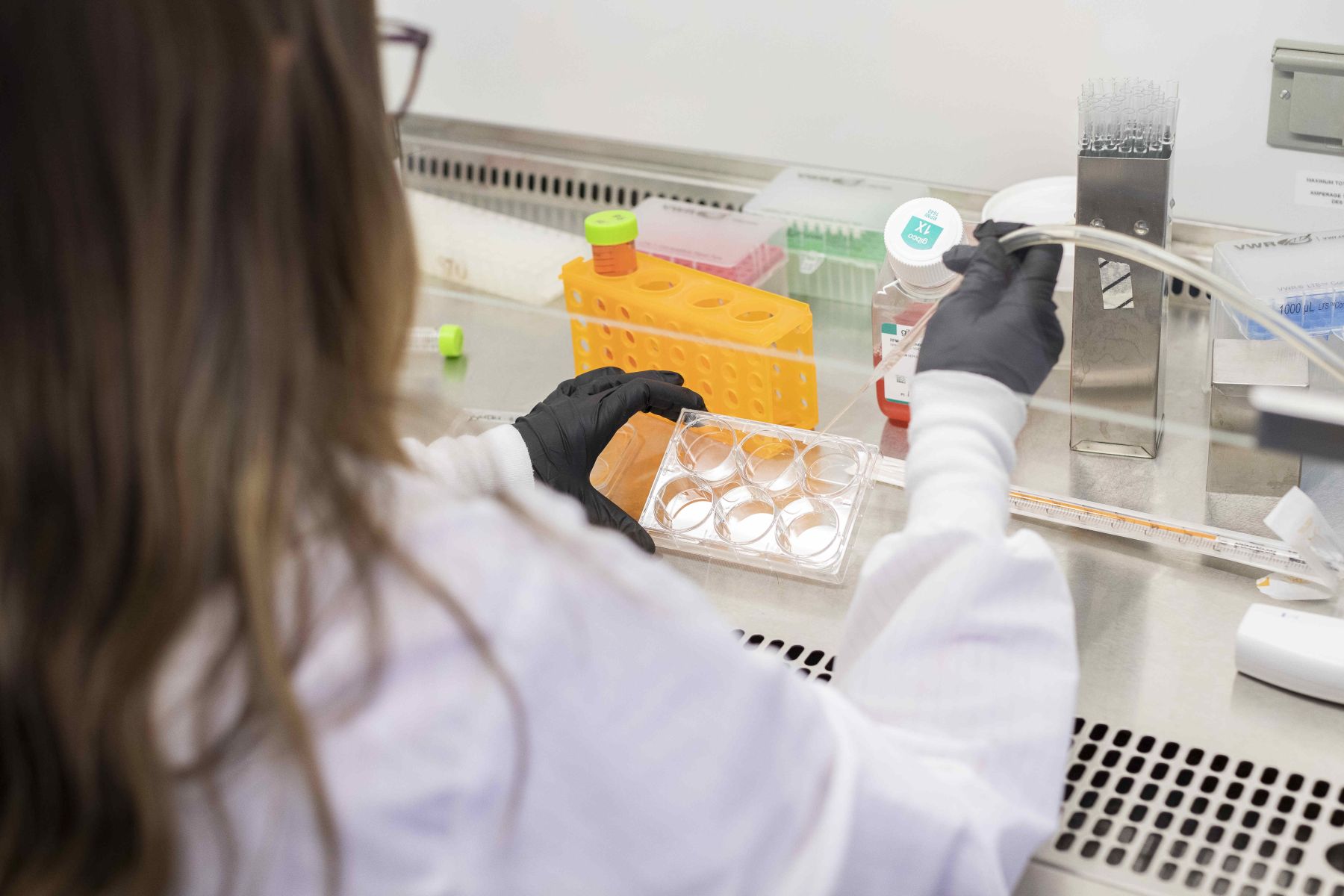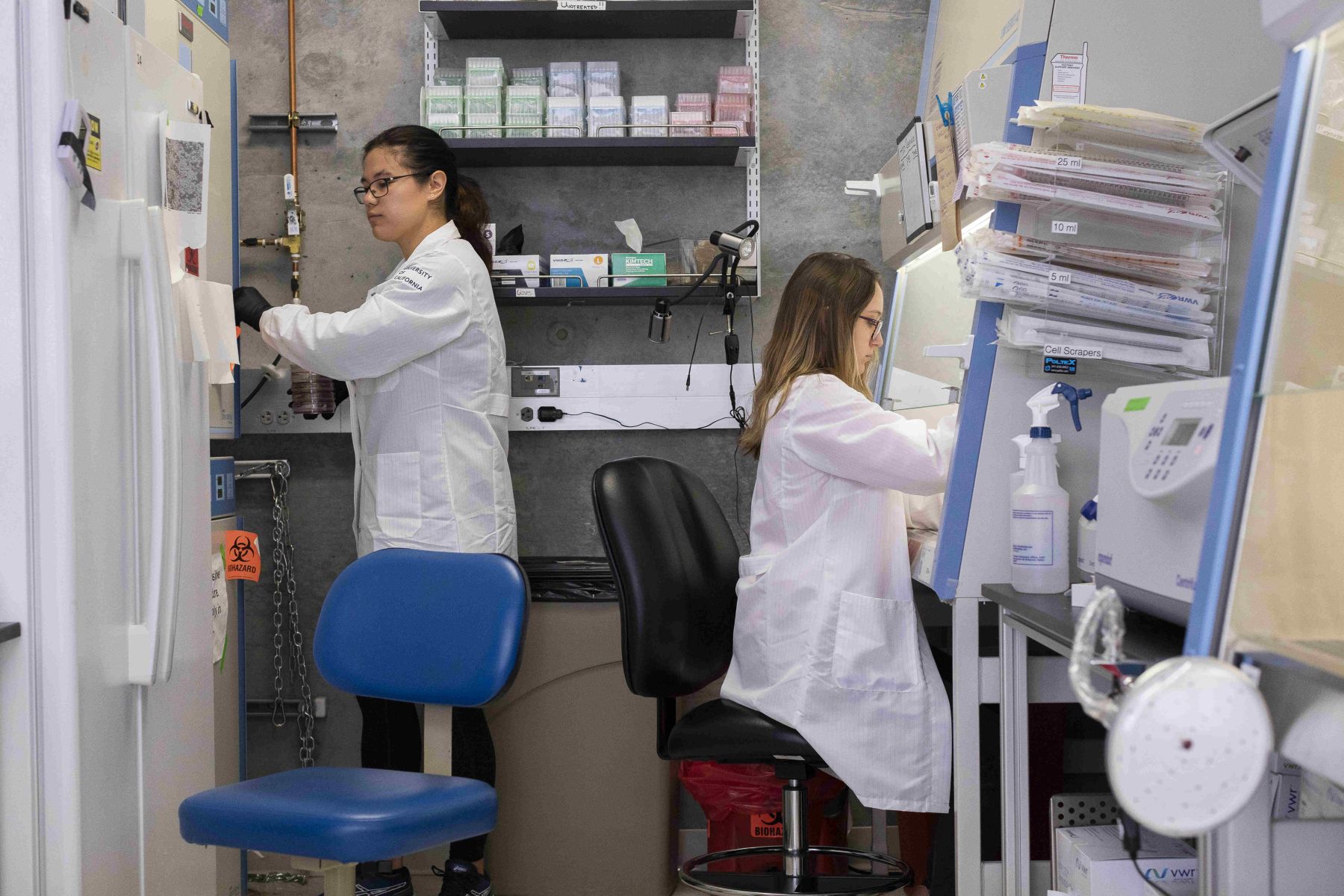
About Annalise Bond
Annalise is a Ph.D. student at UC Santa Barbara in the Morrissey Lab. She is originally from San Diego and completed her B.A. in biology at Whitman College. Annalise was awarded the Karl Storz Imaging fellowship in her second year and her research was recently featured on the NIH Director’s Blog.
What are your favorite things about the following?
MCDB
There is a lot of collaboration that happens within MCDB! I was able to draw from what I learned about optogenetics during my rotation in the Wilson lab to shape my current project and I get ideas from PIs and graduate students in other labs all the time.
UCSB
UCSB has some amazing programs to keep grad students connected to each other and the broader community. One of my favorites is the Center for Science and Engineering Partnerships (CSEP). CSEP hosts a lot of professional development series and an annual Art of Science competition that brings together people from so many disciplines across campus.
Santa Barbara
Everyone says it for a reason, Santa Barbara really is a beautiful place to live! You can’t get better year-round whether and having both the beaches and mountains so close is perfect for surfing, hiking, camping, you name it.

Research
Macrophages are innate immune cells named for their ability to engulf targets such as pathogens, dead or dying cells, and cancerous cells in a process called phagocytosis. My research focuses what makes a macrophage more likely to phagocytose one of these targets. In other words, what effects macrophage appetite? To get at this question, I designed an optogenetic receptor that can trigger phagocytosis with light stimulation even in the absence of other ligands. This tool gives me precise temporal and spatial control over macrophage activation. I’ve found that prior encounters with phagocytic targets (or light stimulation) primes macrophages for an enhanced response to subsequent targets and that this occurs through two mechanisms. The first, short-term, mechanism increases macrophage phagocytosis through enhanced receptor clustering which leads to a higher probability and faster rate of initiating phagocytosis. The second mechanism, which primes macrophages for increased phagocytosis from 4hr to several days later, relies on ERK activation and a transcriptional response. I am currently following up on what specific transcriptional changes are responsible for priming. Many current immunotherapies target macrophages to increase phagocytosis of cancer cells. Understanding how macrophage appetite is regulated may provide insight into how these therapies can be more effective.
How and why did you get into your area of research?
Dr. Morrissey started her lab at UCSB at the same time I started in the program, and I was her first student. When we had our first meeting, I realized how well the research we planned for my rotation fit with my previous experiences and current interests. I had previously worked on microglia in neurodegenerative diseases while at UCSF as a lab tech and the switch to macrophages flowed really nicely.
What do you find rewarding about your research?
The most rewarding part of my research is getting to train and mentor undergrads to work on these projects with me. I have mentored three amazing undergraduate students since joining the Morrissey lab and love seeing their love of science grow.

